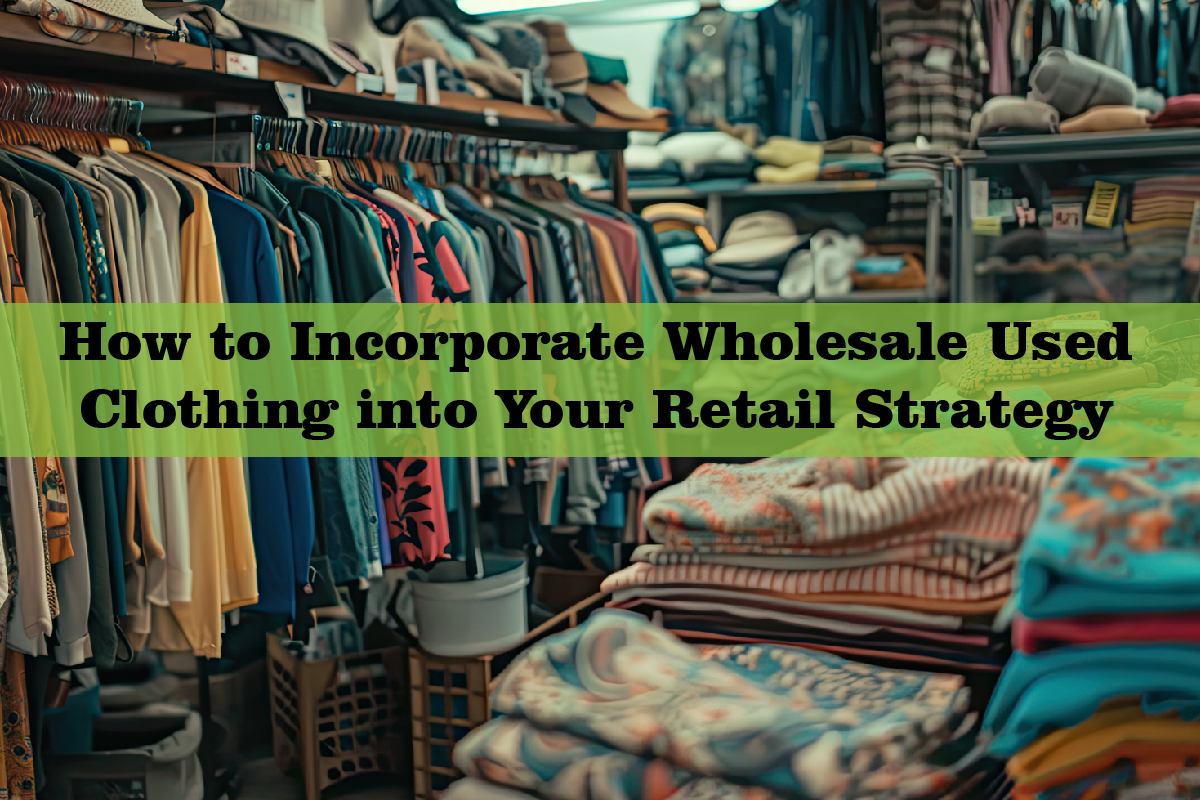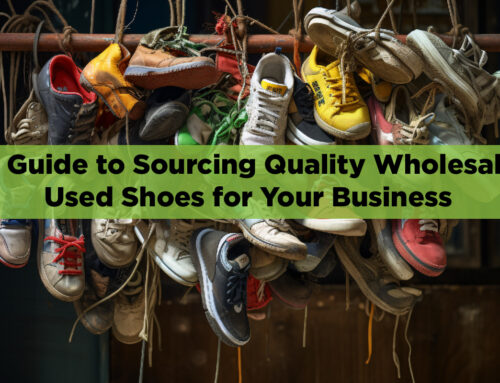Incorporating second-hand clothes and shoes wholesale into your retail strategy can be a successful idea because of the growing demand for sustainable fashion. Shoppers are increasingly becoming budget- and environment-conscious, they make fashion choices that are better for their pocket and the planet. Also, second-hand and vintage clothing offers access to timeless and unique fashion without breaking the bank.
By adapting to these trends, retailers can enjoy great profit margins because used clothing and second-hand shoes wholesale come at lower cost. Regions like California and Los Angeles are hotspots for used clothing and second-hand shoes. With so many options in these areas, it is easier to source the best-quality used items into your product line.
Here is your complete guide to adding pre-owned shoes and clothing to your retail store:
Practical Steps to Add Used Items to Your Retail Store
The following are the most important steps when extending your product line to include second-hand fashion items:
Step 1: Mix vintage and modern items to attract buyers with different interests.
People of all ages and all interests will visit your store. Being the owner or manager, you want to ensure your collection appeals to everyone visiting you. So, you need to curate a well-balanced selection of vintage and modern clothing and shoes to target different demographics.
Vintage fashion carries a nostalgic appeal. It mainly attracts those looking for timeless elegance and stands unique in the crowd. On the other hand, modern fashion is for those who are looking for gently-used clothing and shoes that fit ongoing trends.
It is also important to conduct market and competition research to understand people’s interests. You can order wholesale merchandise accordingly
Consider organizing your stock by era, style, or designer to make shopping easier for shoppers.
Step 2: Present your pre-owned merchandise in a way that reflects your store’s branding.
The way you present your merchandise has a huge impact on how it is perceived. So, consider showcasing clothing and shoes in a way that guarantees a positive experience and appeals to shoppers.
Whatever you use to display your second-hand offerings it should align with your brand’s personality. Even when buying used shoes wholesale in Los Angeles or vintage wholesale clothing in Los Angeles, you should keep this in mind.
Step 3: Set competitive pricing to be affordable and make a good profit.
Make sure you price your second-hand offerings in a balanced manner so that you can make good profit margins. When planning your pricing strategy, make sure you consider factors like the demand, condition, rarity, and brand of the products you want to sell.
In addition, add up the costs of sourcing, distributing, and marketing your offerings. Offers like discounts and bundle deals ensure that used merchandise is a natural part of your store but not a disconnected section.
Remember that target customers looking for second-hand products usually want the best quality items at affordable prices. They are not looking for cheap things. So, price your items accordingly.
Step 4: Leverage the eco-friendly angle when marketing your brand.
As mentioned above, people are increasingly making sustainable and eco-friendly choices. So, incorporate this fact into your marketing campaigns, which are sure to make a huge impact on your sales.
Promote your brand’s message of environmental friendliness through social media, in-store signage, and product tags. All in all, put sustainability and eco-friendliness at the heart of your brand’s theme.
Finding Reliable Wholesale Used Clothing Suppliers
Now, this is one of the most important parts of the process. It can be challenging to find reliable wholesale used clothing suppliers or used shoes distributors. You want genuine distributors who can offer you the best quality, access to a variety of styles, and more at the best prices.
Here are the tips you need to follow in order to find reliable wholesale used clothing suppliers:
● Quality of products: The supplier should maintain high-quality standards, with minimal damage to clothing or shoes. Do not hesitate to ask for samples or visit the store if possible.
● Price: Compare prices to find the best deals while considering the quality and uniqueness.
● Shipping Policies: Make sure you discuss and check shipping costs, timelines, and other guarantees in advance before placing the order.
● Sustainability: Inquire about the sourcing and sustainability measures set and followed by the suppliers.
You can attend fashion shows, exhibitions, trade shows, and other similar events to connect with potential suppliers. It is also worth your time and efforts to maintain your healthy relationships with genuine suppliers, which can be profitable in the long run.
Bonus Tip
There are many popular rag houses in Los Angeles and distributors of used clothing in Los Angeles, making it the best location to search for suppliers. However, given a lot of choices, it is important to follow the criteria discussed above when finding a trustworthy supplier.






